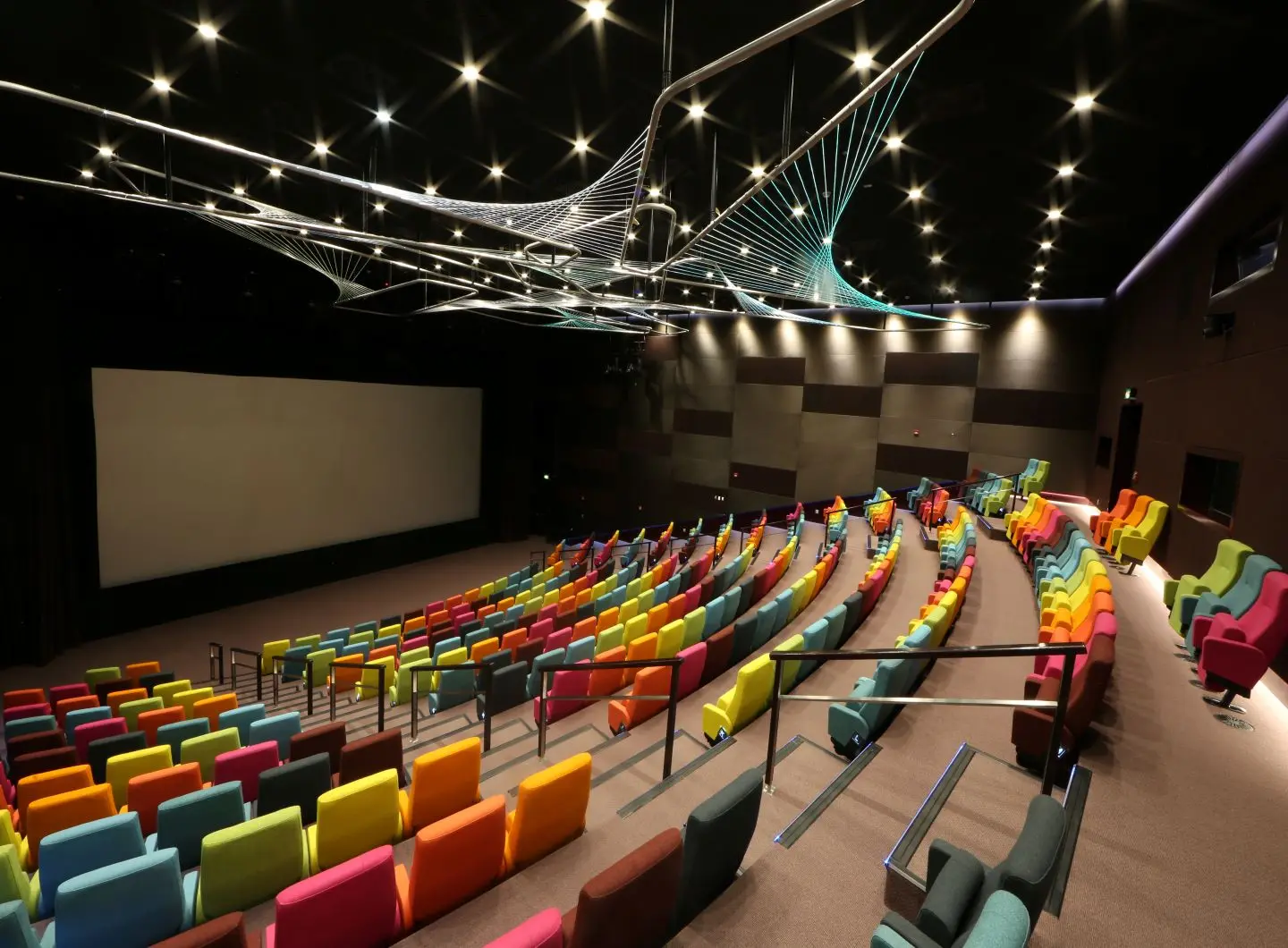Pure volumes, minimal or non-existent decoration, primacy of functionality, harnessing new materials: from the Casa del Fascio in Como to the railway station in Florence, the story of an experimental period that, after almost a century and several attempts at damnatio memoriae, remains a tangible presence in Italy.
In Saudi Arabia creativity is taught as a strategic choice

King Abdulaziz Center for World Culture - Ithra
Saudi Arabia stands out among the Middle Eastern companies imagining their post-petroleum economies for its large investment in culture. The Tanween 2022 festival, held in Dammam between 25 October and 13 November, is a clear example
A land of pilgrimages and ancient civilisations, deserts, sandstone mountains and breath-taking views, Saudi Arabia is now going through swingeing social change. Skyscrapers and shopping malls spring up beside the ruins of the early settlements and a great cultural ferment radiates throughout the peninsula from the capital Riyadh all the way to Dammam, the most important city on the east coast, where a major light festival is currently being held, featuring installations by international artists.
Until the 1980s, Dammam was a sleepy fishing village overlooking the Persian Gulf, surrounded by desert, directly opposite Bahrain, to which it is connected by a bridge. Then, when oil was discovered at the nearby town of Al-Dhahran, the area saw rapid development, becoming the centre of Saudi Arabia’s oil and gas industry, controlled by Saudi Aramco, the most highly capitalised company in the world.
Over the last few years, the Saudi government has taken steps to map its post-petroleum era economy, guided by the Vision 2030 strategic plan, designed to reduce Saudi Arabia’s dependence on oil, diversify the economy and develop public service sectors such as health, education, infrastructures, culture, recreational activities and tourism.

King Abdulaziz Center for World Culture - Ithra
Against this backdrop, the Tanween 2022 festival, which was held between 25 October and 13 November 2022. Now into its fifth edition, Tanween is being held at the King Abdulaziz Center for World Culture (Ithra) in Dammam, an amazing piece of architecture completed in 2018 by the Norwegian studio Snøhetta. Its 100.000 square metres are being used to promote national, Middle Eastern and global art and culture, with exhibitions, events, performances, workshops and various other sorts of events. The building is sensational: the outer skin is made up of individually shaped and bent stainless steel tubes, whilst inside a theatre, a cinema, an auditorium and a number of display spaces are structured around a great central open space leading to the upper floors where there is a large library. The position of Ithra is also important on a symbolic level – the edifice was built on the exact spot where the Kingdom’s first oilwell was discovered.
The theme of this year’s Tanween festival is Collaboration. While the themes of the previous editions were Disruption, Play, The New Next, immediately after the pandemic, and then Tools, Collaboration is exploring a particular aspect of the creative process, focusing on the way in which the cultural industries continue to innovate and drive the economy, highlighting the value of collaboration.

King Abdulaziz Center for World Culture - Ithra, Cinema
With its slogan, Collaborate to Create, Tanween 2022 recognises the need for a synergy between cultures, with nature, with technology and for society. The three weeks of the festival featured sessions on The Business of Creativity, exploring new ways of creative collaboration, including innovative brand crossovers and how working with nature can curb climate damage; on Graphics & Communication, analysing how communication and branding collaboration can be harnessed to reach different cultures and audiences; while Architecture, the topic for the final session of the festival (from 11th to 13th November 2022 ) examined how, by collaborating with the environment, society and culture can do their bit towards improving architecture.
This festival attracts students, creatives and professionals into the spaces made available by Ithra to learn and network through the stories told and the tools shared by the experts, the companies and the cultural and creative industries invited. The second session at Tanween, appropriately entitled Graphics & Communication, enlarged on the theme of creativity and collaboration within the graphics and communication sector. The main speakers included the English entrepreneur and founder of Reebok Joe Foster, who talked about how he managed to turn a family business into a global brand, Carlos Mare, an American street artist of the 1970s and 1980s, who explained how the influence of hip hop, multiculturality and technology were fundamental to his work; Nasser Alshemimry and the Golden Ratio duo, Saudi multimedia artists who found their creative equilibrium through collaboration; and Reeps One (alias Harry Yeff), the English musician, composer and new media artist, pioneer of experimental vocalism who inspired the audience with an audio-visual voice and technology performance.

Carlos Mare at Tanween 2022
The programme of important speakers was put together by the English designer Robert Frith, creative director and curator of Tanween since 2009, who explained that this year’s theme and programme were inspired by the phrase ‘Stop, Collaborate and Listen’ - representing an interesting analogy with the creative process, exploring the reasons behind creativity, and suggesting that we take a step back and look around ourselves. Collaborating means choosing who to work with and listening means bringing one’s own message to an audience, seeing how it responds, receiving feedback and then going back and repeating the process all over again, he added.
Teaching creativity is by no means easy. We take it for granted in Italy. Maria Montessori made freedom of expression the educational basis for the current Italian school system and, by making a virtue of a necessity, we have a manufacturing and productive system that hinges on the creativity of individuals. For Saudi Arabia, which has enjoyed the riches of its underground resources over the last few decades, imagining a post-petroleum economy based on creativity is a major challenge that keeps step with the affirmation of human rights.










